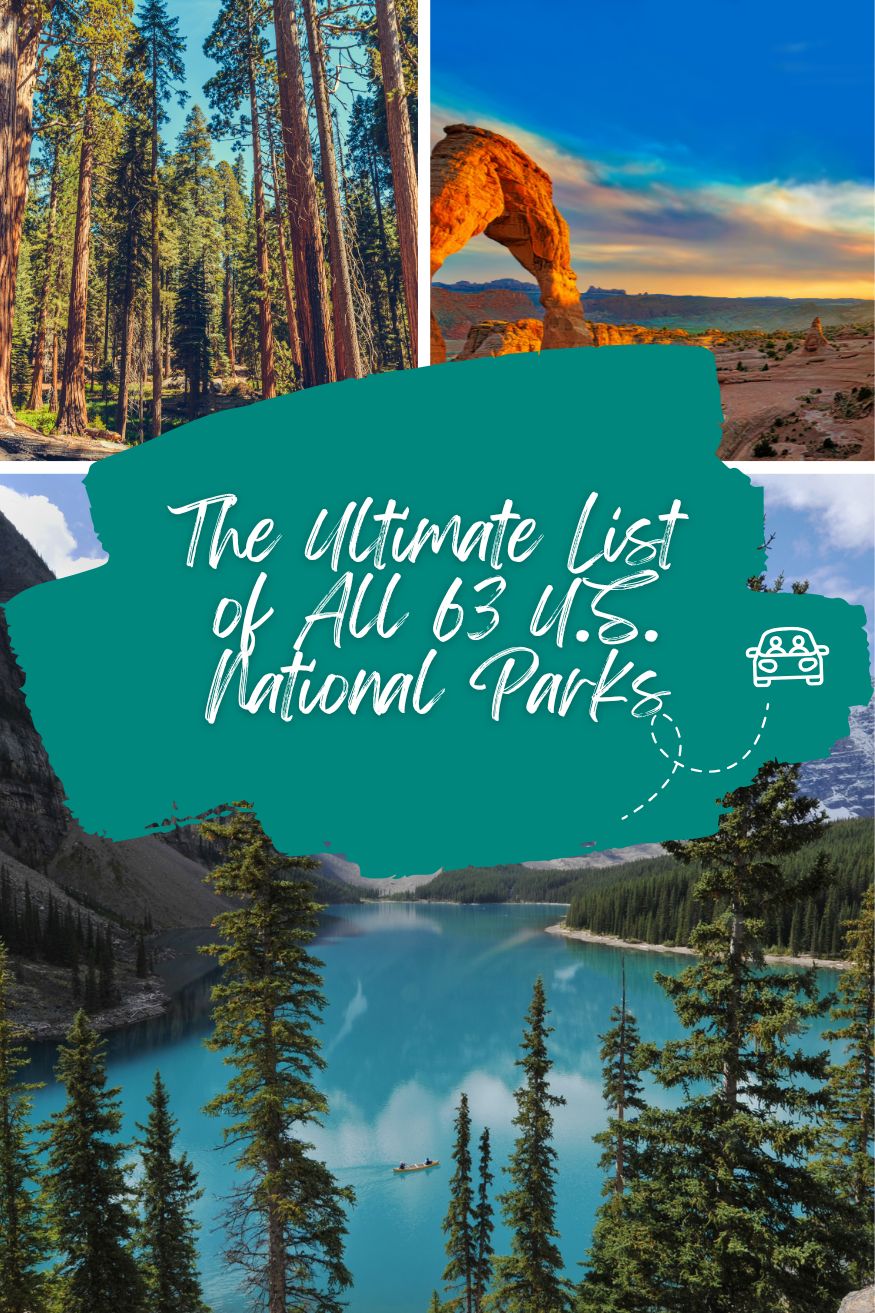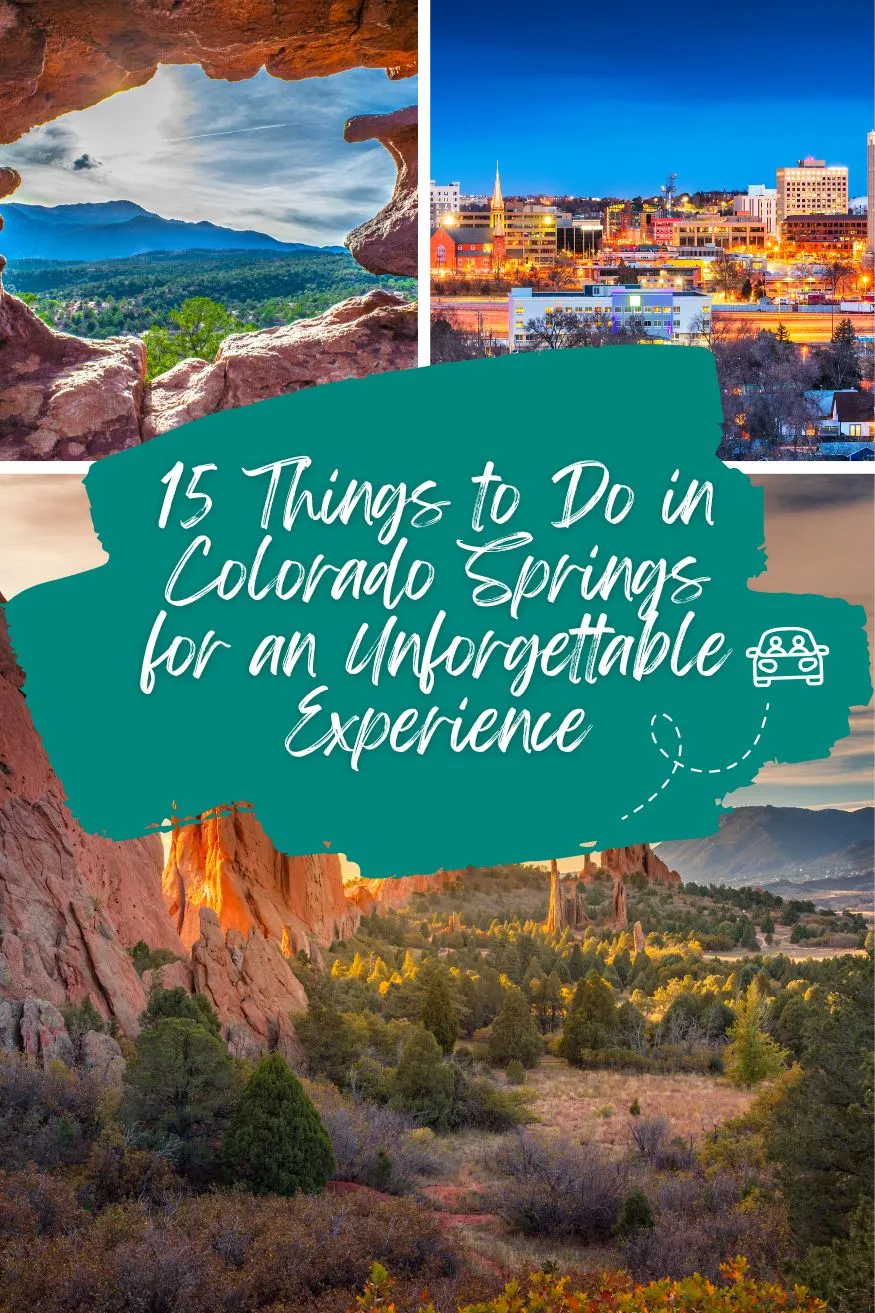From the snow-capped peaks of Rocky Mountain National Park to the tropical waters of the Virgin Islands, the United States is home to 63 awe-inspiring national parks. Managed by the National Park Service, each national park in the United States offers something unique — majestic mountains, deep canyons, ancient forests, pristine coastlines, and even arctic wilderness. Whether you’re chasing waterfalls or stargazing in the desert, this guide introduces every park, with tips on what makes each one unforgettable.
The Full List: Every National Park in the United States
There are 63 official national parks designated by the National Park Service, and each one offers a unique adventure. From the deserts of Utah to the glaciers of Alaska, these incredible parks span every region and climate. Here’s a more detailed look at each national park in the United States:
1. Acadia National Park (Maine)
Rugged Atlantic coastline, Cadillac Mountain sunrises, and forested trails define this beloved East Coast park. Acadia National Park in Maine features rocky coastline, granite peaks, and tide pools along Mount Desert Island. It’s the only national park in the northeastern U.S. and offers scenic beauty, hiking trails, and sandy beaches. This national park in the United States is preserved by the National Park Service and highlights the rugged coastlines of New England for future generations.
2. American Samoa National Park (American Samoa)
The National Park of American Samoa is one of the most remote and culturally unique national parks in the United States. Located in the South Pacific, this park is part of the national park system and is managed in partnership with local villages. The park is home to tropical rainforests, coral reefs, and rugged volcanic mountains, offering scenic beauty and diverse ecosystems rarely seen in other parks. With miles of hiking trails through lush terrain, sandy beaches, and views of the vibrant ocean, the park ensures that future generations will experience both natural wonder and cultural heritage. This remote location celebrates traditional Samoan customs alongside the natural beauty that defines a true national park in the United States.
3. Arches National Park (Utah)
Over 2,000 natural sandstone arches and other red rock formations in the high desert. This national park offers visitors scenic beauty, unique geological features, and numerous hiking trails, including the famous Delicate Arch trail. Arches National Park is a UNESCO World Heritage Site that attracts millions of visitors each year to explore its striking red rock landscapes.
4. Badlands National Park (South Dakota)
Eroded buttes and layered rock formations meet prairies filled with bison and bighorn sheep. Badlands National Park in South Dakota is famous for its dramatically eroded landscape, with jagged peaks, deep gorges, and layered rock formations. This national park in the United States offers a unique opportunity to explore the natural beauty of the Badlands, with miles of hiking trails and a variety of wildlife, including bison and prairie dogs. Badlands National Park preserves these striking landscapes for future generations and provides a sense of solitude and adventure.
5. Big Bend National Park (Texas)
Located along the Rio Grande, this park features desert, mountains, canyons, and star-studded night skies. The park offers miles of hiking trails, scenic drives, and a rich diversity of wildlife. Managed by the National Park Service, Big Bend is a national park in the United States that provides a peaceful, remote retreat for outdoor enthusiasts and nature lovers.
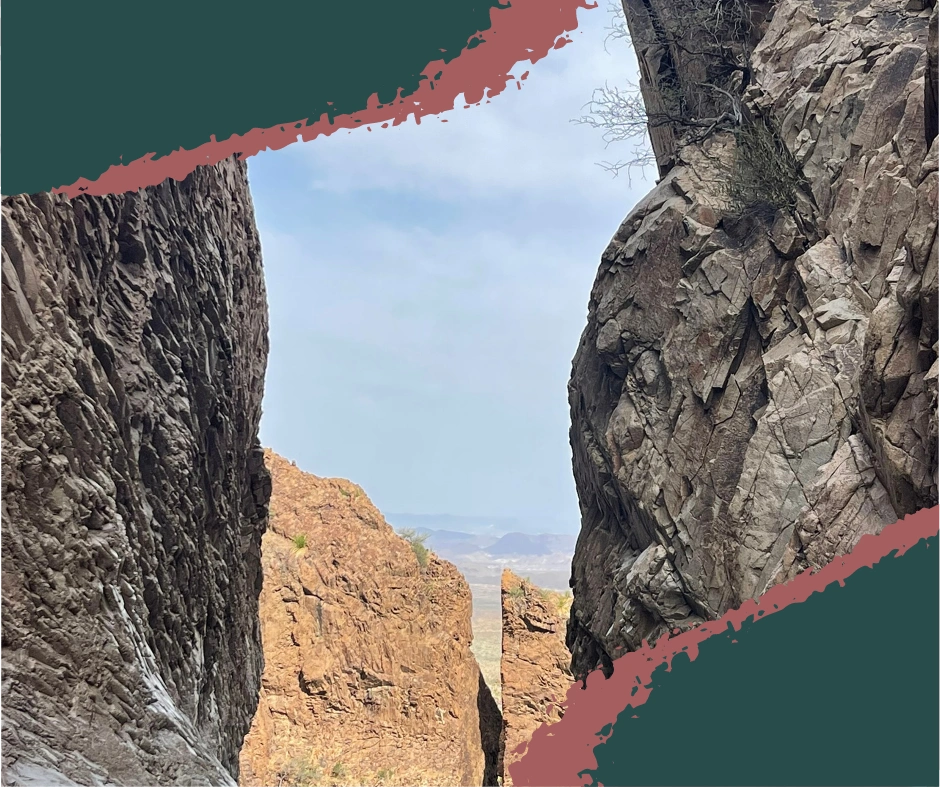
6. Biscayne National Park (Florida)
A marine park preserving coral reefs, mangroves, and shipwrecks — ideal for snorkeling and boating. It is one of the largest marine parks in the national park system and offers exceptional opportunities for snorkeling, diving, and boat tours. It showcases the incredible diversity of marine ecosystems and preserves them for future generations.
7. Black Canyon of the Gunnison National Park (Colorado)
One of the steepest and most dramatic canyons in North America. The Black Canyon’s nearly vertical walls create a breathtaking landscape, which visitors can explore via hiking trails and scenic drives. Managed by the National Park Service, Black Canyon is a national park in the United States that offers a unique combination of natural beauty, geological significance, and outdoor adventure, making it a must-see destination for those interested in both scenic beauty and geology.
8. Bryce Canyon National Park (Utah)
Home to thousands of colorful hoodoos, or spire-shaped rock formations. Bryce Canyon National Park in southern Utah is known for its surreal landscape of red rock hoodoos and rock towers. This canyon national park is part of the national park system and is managed by the National Park Service. With scenic trails, stargazing opportunities, and breathtaking overlooks, Bryce Canyon is a favorite park in Utah’s canyon country.
9. Canyonlands National Park (Utah)
A vast desert landscape carved by the Colorado River, perfect for backcountry exploration. Canyonlands National Park offers visitors scenic beauty, rock climbing, and miles of hiking trails. Its unique geological features and remote location make it a favorite among adventurers seeking a rugged, natural landscape.
10. Capitol Reef National Park (Utah)
Known for its Waterpocket Fold, fruit orchards, and scenic red cliffs. The park is rich in both natural beauty and history, with ancient petroglyphs and pioneer settlements. Capitol Reef is a national park in the United States that offers visitors miles of hiking trails, scenic drives, and the opportunity to explore its unique geological formations and diverse ecosystems.
11. Carlsbad Caverns National Park (New Mexico)
Features more than 100 caves including the famous Big Room, the largest chamber in North America. It is renowned for its spectacular limestone caves, including the famous Carlsbad Cavern. With more than 119 caves, the park offers a variety of underground adventures, from guided tours to self-guided explorations. Carlsbad Caverns preserves one of the most significant cave systems in the world. Visitors can witness breathtaking stalactites and stalagmites, along with the annual bat flight, making it a truly unique experience.
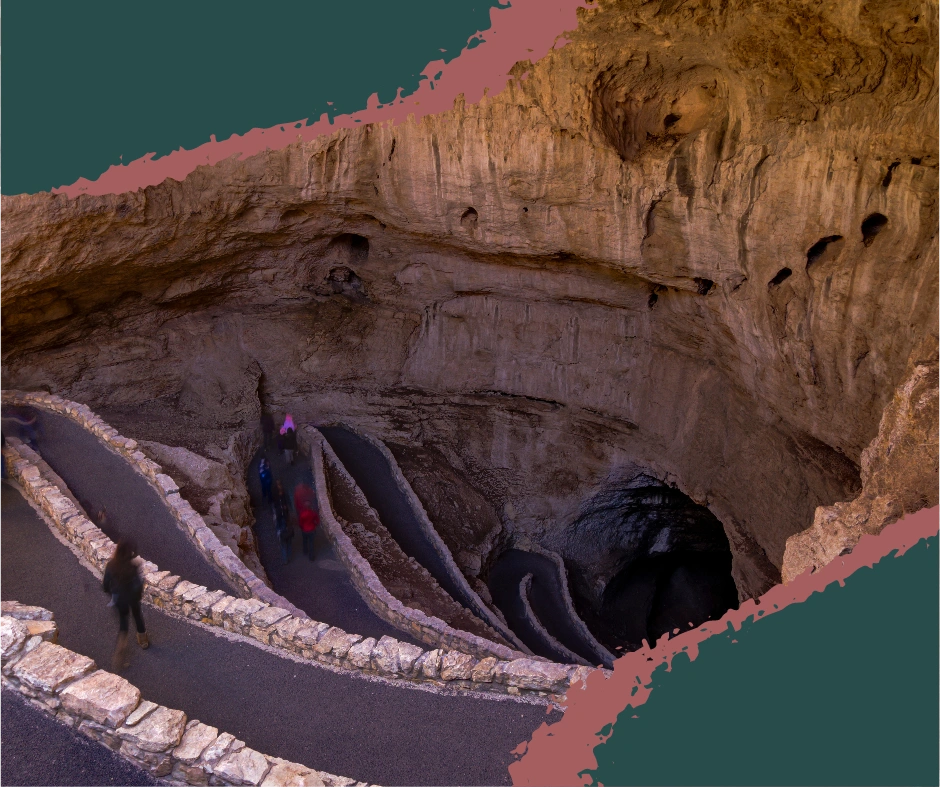
12. Channel Islands National Park (California)
Channel Islands National Park in California encompasses five remote islands off the coast of Southern California, each offering a wealth of wildlife, natural beauty, and cultural history. The park is a haven for marine life, including sea lions, dolphins, and endangered species like the island fox. Managed by the National Park Service, Channel Islands is a national park in the United States that offers visitors the chance to experience kayaking, snorkeling, and hiking among its rugged cliffs and pristine beaches, making it a perfect spot for nature lovers.
13. Congaree National Park (South Carolina)
Congaree National Park, located in South Carolina, is one of the largest tracts of old-growth bottomland hardwood forest in the United States. The park is home to diverse ecosystems, including swamps, floodplains, and wetlands, and is a haven for birdwatching and wildlife enthusiasts. Managed by the National Park Service, Congaree is a national park in the United States that offers scenic beauty, hiking trails, and the chance to experience a unique and ecologically important landscape.
14. Crater Lake National Park (Oregon)
Crater Lake National Park in Oregon is famous for its crystal-clear, deep blue lake, which was formed by the collapse of an ancient volcano. The park offers breathtaking views of the lake and surrounding cliffs, as well as opportunities for hiking, boating, and winter sports. Managed by the National Park Service, Crater Lake preserves the pristine beauty of the lake and its volcanic surroundings. Visitors can explore hiking trails, take scenic drives, and learn about the park’s geological history at the visitor center.
15. Cuyahoga Valley National Park (Ohio)
A mix of forest, farmland, and waterfalls nestled between Cleveland and Akron. It offers forest trails, waterfalls, and a national historical park vibe with preserved farmland and cultural heritage. As part of the national park service, it includes a visitor center and miles of hiking trails that serve both natural and historical interests. If you’re also planning to explore other regions, don’t miss the chance to discover the best parks Columbus has to offer for outdoor fun and adventure.
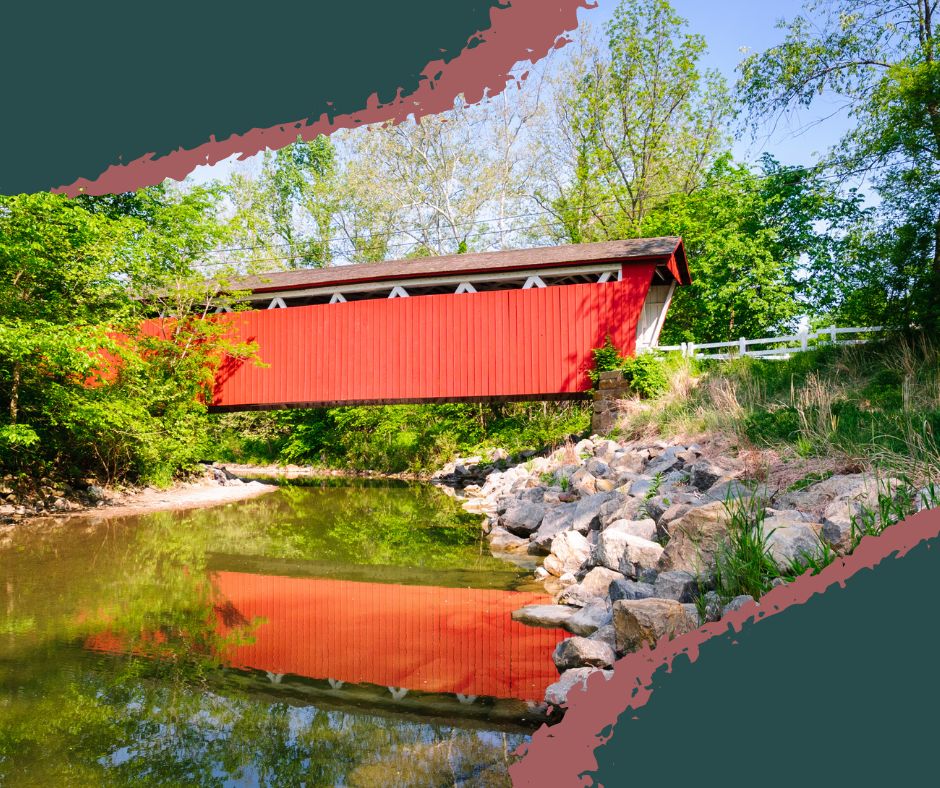
16. Death Valley National Park (California, Nevada)
The hottest, driest, and lowest national park in the United States. It offers vast desert landscapes, salt flats, and dramatic canyons. Managed by the National Park Service, Death Valley is a national park system gem, featuring extreme environments and stunning vistas. Visitors can explore its diverse ecosystems, from the lowest point in North America at Badwater Basin to the rugged peaks of the Panamint Range.
17. Denali National Park (Alaska)
Features North America’s highest peak, wildlife, and stunning tundra landscapes. Denali National Park in Alaska is home to Denali, the tallest mountain in North America. This arctic national park features remote wilderness, diverse wildlife, and expansive alpine tundra. The park is managed by the National Park Service and includes miles of hiking trails and scenic drives. Denali National Park represents the rugged spirit of the mountains national park experience.
18. Dry Tortugas National Park (Florida)
Dry Tortugas National Park, located 70 miles west of Key West, Florida, is one of the most remote national parks in the United States. Accessible only by boat or seaplane, this unique park is known for its crystal-clear waters, coral reefs, and the historic Fort Jefferson. Managed by the National Park Service, Dry Tortugas offers snorkeling, birdwatching, and a glimpse into maritime history. As a national park in the United States, it provides visitors with rare access to both cultural and natural beauty while preserving fragile marine ecosystems for future generations.
19. Everglades National Park (Florida)
A unique wetland ecosystem filled with alligators, mangroves, and slow-moving rivers. Everglades National Park in Florida is the largest subtropical wilderness in the contiguous United States and is managed by the National Park Service. This unique national park in the United States protects wetlands, mangroves, and diverse ecosystems, including manatees, alligators, and wading birds. With boardwalk trails, boat tours, and scenic beauty, the park is a UNESCO World Heritage Site that ensures its preservation for future generations.
20. Gates of the Arctic National Park (Alaska) –
Gates of the Arctic National Park in northern Alaska is the second-largest national park in the United States and the most remote. With no roads or trails, this vast arctic national park offers true wilderness for adventurous visitors. It protects parts of six wild rivers and several mountain ranges, making it ideal for backpacking, wildlife watching, and solitude. As a mountains national park and one of the wildest in the country, it’s a place of unmatched natural beauty and cultural importance to native Alaskan communities.
21. Gateway Arch National Park (Missouri)
Gateway Arch National Park in St. Louis, Missouri, is one of the smallest parks in the national park system but holds immense historical significance. The iconic Gateway Arch stands 630 feet tall and commemorates westward expansion in the United States. While it may not include hiking trails or wilderness, this national park in the United States offers educational exhibits, sweeping views from the top of the Arch, and access to the nearby Mississippi River. Managed by the National Park Service, this national historical park and national monument symbolizes innovation and ambition, connecting America’s past with its present.
22. Glacier National Park (Montana)
A mountains national park known for alpine scenery, Going-to-the-Sun Road, and glacier-carved valleys. Glacier National Park in Montana is famous for its rugged mountain ranges, glaciers, and pristine lakes. Known for its stunning landscapes and diverse ecosystems, this national park in the United States is managed by the National Park Service. Glacier National Park offers miles of hiking trails, wildlife viewing, and breathtaking vistas, ensuring it remains a top destination for nature lovers.
23. Glacier Bay National Park (Alaska)
Accessible mainly by boat, it features tidewater glaciers, whales, and rugged coastal mountains. Glacier Bay National Park in Alaska is renowned for its stunning glaciers, fjords, and abundant wildlife, including humpback whales and sea otters. This national park in the United States is part of the National Park Service and is a UNESCO World Heritage Site. Glacier Bay offers scenic beauty, hiking trails, and boat tours, ensuring the preservation of its remote wilderness for future generations.
24. Grand Canyon National Park (Arizona)
A wonder of the natural world, the massive canyon reveals 2 billion years of geological history. Grand Canyon National Park in Arizona is one of the most iconic landscapes in the national park system. Carved by the Colorado River, this canyon national park is a UNESCO World Heritage Site known for its immense scale and natural beauty. Grand Canyon National Park offers access to miles of hiking trails, scenic overlooks, and a well-equipped visitor center. It’s a symbol of American wilderness preserved for future generations.
25. Grand Teton National Park (Wyoming)
Grand Teton National Park in Wyoming is a stunning example of the natural beauty preserved by the National Park Service. Known for its jagged peaks, alpine lakes, and abundant wildlife, this mountains national park offers some of the best hiking trails, rock climbing routes, and scenic drives in the national park system. Located just south of Yellowstone National Park, Grand Teton National Park is a favorite park for photographers, climbers, and families. The park is home to the Teton Range and features miles of hiking trails through pristine wilderness, making it a must-visit national park in the United States for outdoor enthusiasts and future generations.
26. Great Basin National Park (Nevada)
Great Basin National Park in eastern Nevada is a hidden gem among the national parks in the United States. It features the 13,063-foot Wheeler Peak, ancient bristlecone pine forests, and the intricate Lehman Caves. Managed by the National Park Service, this remote location in the contiguous United States provides stargazing opportunities under some of the darkest skies in the country. The park is home to diverse ecosystems ranging from desert valleys to alpine lakes, and visitors can explore scenic trails, visit the visitor center, and experience the solitude that defines this mountains national park.
27. Great Sand Dunes National Park (Colorado)
Great Sand Dunes National Park in Colorado showcases the tallest sand dunes in North America, rising dramatically in front of the Sangre de Cristo mountain range. It offers a mix of sandy beaches by Medano Creek, alpine lakes, and hiking trails through forests and tundra. The National Park Service manages this diverse landscape, where visitors can go sandboarding, horseback riding, or backpacking into the dune field. Great Sand Dunes is part of the national park system’s commitment to protecting varied ecosystems and offering natural beauty for future generations.
28. Great Smoky Mountains National Park (Tennessee, North Carolina)
The most visited national park in the United States, with foggy ridges and lush biodiversity. Great Smoky Mountains National Park spans North Carolina and Tennessee and is the most visited national park in the United States. It features old growth forests, scenic beauty, and countless hiking trails across the Appalachian Mountains. Managed by the National Park Service, it offers horseback riding, wildlife watching, and vibrant wildflowers. As a UNESCO World Heritage Site, Great Smoky Mountains National ensures these diverse ecosystems remain protected.
29. Guadalupe Mountains National Park (Texas)
Home to the highest peak in Texas and remnants of an ancient reef. Guadalupe Mountains National Park in Texas is known for its dramatic mountain ranges, desert landscapes, and diverse wildlife. Home to the highest peak in Texas, Guadalupe Peak, this mountains national park offers scenic trails and stunning views. Managed by the National Park Service, it protects both natural beauty and historic sites, making it a must-see park for adventure seekers.
30. Haleakalā National Park (Hawaiʻi)
A dormant volcanic crater that offers sunrise views above the clouds and tropical rainforests. Haleakalā National Park on the island of Maui in Hawaii features a massive volcanic crater and rich biodiversity. This volcanoes national park is known for its sunrise views above the clouds and diverse ecosystems. Managed by the National Park Service, it protects sacred landscapes and endangered species, preserving natural beauty for future generations.
31. Hawaiʻi Volcanoes National Park (Hawaiʻi)
Features two of the world’s most active volcanoes: Kīlauea and Mauna Loa. Hawaiʻi Volcanoes National Park on the Big Island of Hawaii is one of the most geologically active areas on Earth. This volcanoes national park includes Kīlauea and Mauna Loa and is designated a UNESCO World Heritage Site. Managed by the National Park Service, the park offers lava tubes, scenic trails, and visitor centers to explore the Earth’s dynamic forces.
32. Hot Springs National Park (Arkansas)
Hot Springs National Park in Arkansas is unique among national parks in the United States for blending urban and natural experiences. Managed by the National Park Service, it preserves historic bathhouses along Bathhouse Row and the thermal springs that made the area famous. Hot Springs is rich in natural beauty and history, providing a peaceful retreat and a cultural experience for future generations.
33. Indiana Dunes National Park (Indiana)
Along Lake Michigan, this park includes sandy dunes, forests, and wetlands. It is one of the newest national parks in the United States and offers an incredible variety of ecosystems. This national park is home to sandy beaches, towering dunes, wetlands, and oak savannas. The National Park Service protects this diverse landscape, which also includes historic sites and over 50 miles of hiking trails. Indiana Dunes combines natural beauty and outdoor recreation with easy access from nearby cities, making it a favorite park for families, birdwatchers, and those seeking a day trip or weekend escape in the national park system.
34. Isle Royale National Park (Michigan)
A remote island in Lake Superior, accessible only by boat or seaplane. Isle Royale National Park, located on an island in Lake Superior, offers rugged beauty with dense forests, rocky shores, and tranquil waters. This remote national park in the United States is accessible only by boat or seaplane and features miles of hiking trails. Managed by the National Park Service, Isle Royale provides a peaceful retreat for those seeking solitude and nature immersion.
35. Joshua Tree National Park (California)
Named for its spiky Joshua trees and known for desert landscapes and stargazing. It is known for its unique landscape, where the Mojave and Colorado deserts meet. The park’s signature Joshua trees, along with striking rock formations, provide a stunning backdrop for hiking, rock climbing, and stargazing.
36. Katmai National Park (Alaska)
Famous for brown bears fishing for salmon at Brooks Falls. Katmai National Park in Alaska is known for its volcanoes and incredible wildlife, particularly brown bears. This remote location offers hiking trails through valleys and along rivers where visitors can observe bear activity during salmon runs. Managed by the National Park Service, Katmai National Park protects diverse ecosystems and provides access to natural beauty in its wild, untouched state.
37. Kenai Fjords National Park (Alaska)
A stunning Kenai Fjords National Park filled with tidewater glaciers and marine wildlife. It offers visitors the chance to explore the rugged coastline, spot sea lions, and watch glaciers calve into the ocean. Kenai Fjords provides hiking trails, wildlife viewing, and boat tours to showcase its diverse ecosystems and dramatic landscapes.
38. Kings Canyon National Park (California)
A Kings Canyon National Park filled with deep gorges and alpine terrain near Sequoia. Kings Canyon National Park in California neighbors Sequoia and is filled with granite cliffs, deep canyons, and ancient trees. As part of the national park system, Kings Canyon National is managed by the National Park Service and offers hiking trails through dramatic scenery. This mountains national park protects natural beauty and serenity for future generations to explore.
39. Kobuk Valley National Park (Alaska) –
Kobuk Valley National Park in Alaska is one of the most remote and least visited national parks in the United States, offering a true wilderness experience. This arctic park, features the Great Kobuk Sand Dunes, caribou migration routes, and pristine rivers. As part of the broader national park system, Kobuk protects an extraordinary landscape where visitors can explore scenic beauty without trails or roads. Its remote location ensures that this park is home to untouched ecosystems and breathtaking views, preserved for future generations seeking solitude and adventure in the Arctic Circle.
40. Lake Clark National Park (Alaska)
Combines volcanoes, rivers, and salmon-bearing lakes in a remote wilderness. Lake Clark National Park and Preserve, also in Alaska, combines mountains, volcanoes, rivers, and coastline into a single breathtaking destination. This national park in the United States is known for its active volcanoes, salmon-filled rivers, and chances to see brown bears in the wild. The park offers opportunities for kayaking, backpacking, and flightseeing. As a mountains national park with alpine lakes and diverse ecosystems, it showcases the natural beauty of Alaska while remaining one of the least crowded parks in the national park system, perfect for adventurous travelers and future generations.
41. Lassen Volcanic National Park (California)
Features all four types of volcanoes and active geothermal areas. Lassen Volcanic National Park in California is a geologically active park with bubbling hot springs, fumaroles, and the active Lassen Peak volcano. This volcanoes national park offers visitors an up-close view of volcanic activity while exploring its unique ecosystems. Lassen Volcanic provides hiking trails, scenic views, and opportunities to learn about the geothermal features that make this park stand out.
42. Mammoth Cave National Park (Kentucky)
Mammoth Cave National Park in Kentucky is home to the longest known cave system in the world, with more than 400 miles of explored passageways. As a national park in the United States and a UNESCO World Heritage Site, it offers a fascinating underground world full of limestone formations and historical artifacts. It includes hiking trails through lush forests, scenic trails along the Green River, and opportunities for horseback riding and camping. Mammoth Cave is part of the national park system’s commitment to preserving natural beauty and geological wonders for future generations.
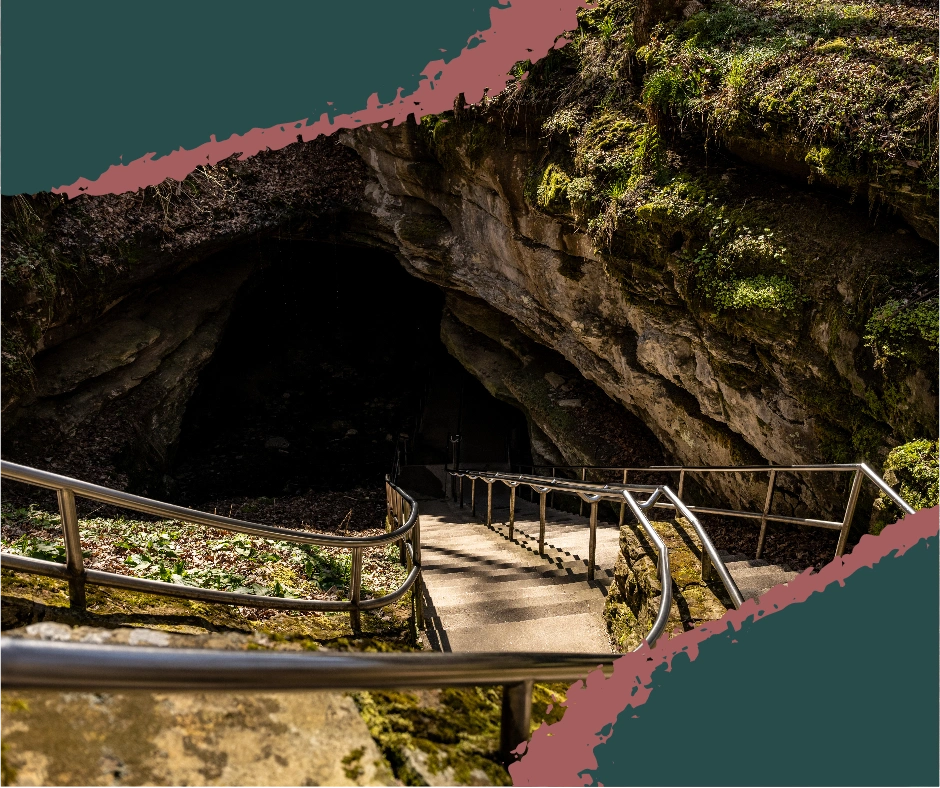
43. Mesa Verde National Park (Colorado)
Mesa Verde National Park in Colorado preserves some of the most significant archaeological sites in North America. This national park protects the cliff dwellings and ancient homes of the Ancestral Pueblo people. As a national historical park and UNESCO World Heritage Site, Mesa Verde offers miles of hiking trails through canyons and forests, as well as guided tours of the incredible rock structures. The park is home to both cultural heritage and natural beauty, making it a key part of the national park system and an unforgettable experience for all visitors.
44. Mount Rainier National Park (Washington)
Dominated by its namesake glacier-covered volcano, a favorite for climbers. Mount Rainier National Park in Washington showcases glacier-capped peaks, alpine lakes, and wildflower-filled meadows. The park is centered around Mount Rainier, an active volcano, and is managed by the National Park Service. With miles of hiking trails and scenic beauty, this national park in the United States inspires all who visit and supports the mission of the National Park Foundation.
45. New River Gorge National Park (West Virginia)
New River Gorge National Park in West Virginia is one of the newest national parks in the United States and a treasure in the national park system. Known for the scenic beauty of the New River and its deep canyon, this river gorge national park is a haven for rock climbing, whitewater rafting, and hiking trails. The park includes old growth forests, sandstone cliffs, and one of the country’s most iconic bridges. With the virgin river cutting through the landscape, this park is home to rich biodiversity and countless outdoor adventures for future generations.
46. North Cascades National Park (Washington)
North Cascades National Park in Washington is often called the “American Alps” for its rugged terrain, alpine lakes, and snow-covered peaks. This mountains national park features more than 300 glaciers—the most in the contiguous United States. North Cascades offers scenic trails, remote wilderness, and access to the Ross Lake National Recreation Area. The park is home to three mountain ranges, rich ecosystems, and some of the best backcountry hiking in the national park system. Its remote location and dramatic scenery make it a dream destination for adventurers and nature lovers.
47. Olympic National Park (Washington)
Olympic National Park, located on Washington’s Olympic Peninsula, showcases the most diverse ecosystems of any national park in the United States. From tide pools along the Pacific coast to alpine peaks and temperate rainforests, this national park is a UNESCO World Heritage Site. Olympic National Park includes miles of hiking trails, sandy beaches, old growth forests, and glacial mountains. This mountains national park is home to sea lions, elk, and black bears, offering something for every type of visitor. The natural beauty of Olympic ensures its preservation for future generations to explore and enjoy.
48. Petrified Forest National Park (Arizona)
Petrified Forest National Park in Arizona is famous for its colorful badlands and fossilized trees that date back over 200 million years. This national park in the United States combines geology, paleontology, and Native American history. Its unique landscapes include scenic trails, ancient petroglyphs, and parts of the historic Route 66. The park is home to rock towers, badlands terrain, and preserved logs that sparkle with quartz. As a lesser-visited gem in the national park system, Petrified Forest offers quiet exploration and stunning desert vistas for future generations.
49. Pinnacles National Park (California)
Known for spire-like rock formations and California condors. This national park is a haven for rock climbers and offers a variety of hiking trails that explore its unique landscapes. Pinnacles is home to a number of endangered species and offers visitors the chance to explore its scenic beauty and rugged terrain.
50. Redwood National and State Parks (California)
Redwood National and State Parks in northern California protect some of the tallest trees on Earth and a diverse range of ecosystems. As a national park in the United States jointly managed by the National Park Service and California State Parks, this destination includes miles of hiking trails through towering redwoods, lush fern canyons, and rugged coastline. The park is home to tide pools, sea lions, and old growth forests that represent the natural beauty of the Pacific Northwest. This UNESCO World Heritage Site and national park system highlight offers both scenic beauty and serenity, ensuring that future generations can experience the awe of these ancient giants.
51. Rocky Mountain National Park (Colorado)
A Rocky Mountain National Park icon with alpine meadows and scenic drives. The park is a haven for outdoor enthusiasts, offering hiking trails, wildlife watching, and scenic drives like the Trail Ridge Road, which reaches over 12,000 feet. Rocky Mountain National Park provides access to the majestic mountains national park landscape and protects it for future generations.
52. Saguaro National Park (Arizona)
Named for the iconic saguaro cactus, a desert emblem. The park features miles of hiking trails, scenic drives, and a diverse range of desert ecosystems. Managed by the National Park Service, Saguaro is a national park in the United States that offers visitors a chance to experience the beauty of the desert landscape, while protecting the fragile environment of one of the country’s most iconic natural symbols.
53. Sequoia National Park (California)
Home to giant trees and high Sierra scenery. Sequoia National Park in California is famous for its giant sequoia trees, including the General Sherman Tree—the largest tree on Earth. As a mountains national park, it offers granite cliffs, alpine lakes, and miles of hiking trails. Managed by the National Park Service, this national park in the United States is often paired with Kings Canyon National Park to explore towering forests and stunning scenery.
54. Shenandoah National Park (Virginia)
Follows the Blue Ridge Mountains and the Skyline Drive scenic route. Shenandoah National Park, located in Virginia, is part of the Appalachian Mountains and offers breathtaking views along the famous Skyline Drive. The park is home to a rich diversity of plant and animal species, including white-tailed deer and black bears.Shenandoah features miles of hiking trails, including sections of the Appalachian Trail, providing scenic beauty and outdoor adventures for visitors.
55. Theodore Roosevelt National Park (North Dakota)
Badlands, prairie dogs, and bison roam the landscapes that inspired the conservation-minded president. The park is home to bison, wild horses, and prairie dogs, making it a favorite spot for wildlife enthusiasts. Theodore Roosevelt National Park offers hiking trails and scenic drives through rolling hills and dramatic canyons.
56. Virgin Islands National Park (U.S. Virgin Islands)
Virgin Islands National Park is located on the island of St. John and features crystal-clear waters, sandy beaches, coral reefs, and lush tropical forests. This national park in the United States protects both terrestrial and marine ecosystems. Managed by the National Park Service, the park offers snorkeling, hiking trails, and a visitor center to educate about its natural beauty. It ensures the preservation of this unique paradise for future generations.
57. Voyageurs National Park (Minnesota)
Voyageurs National Park in northern Minnesota is a unique water-based national park in the United States, where visitors explore vast interconnected lakes and forested islands by boat or kayak. Managed by the National Park Service, Voyageurs offers scenic trails, old growth forests, and access to natural beauty through miles of waterways instead of roads. This remote park is home to bald eagles, moose, and incredible star-filled skies, making it a peaceful retreat within the national park system. With its mix of water recreation and forest hiking trails, Voyageurs is a memorable experience preserved for future generations.
58. White Sands National Park (New Mexico)
Vast gypsum sand dunes create an otherworldly desert. White Sands National Park in New Mexico features a vast field of gypsum sand dunes—the largest of its kind in the world. This national park offers scenic beauty, family-friendly hiking trails, and opportunities for sand sledding. This park is home to unique ecosystems found nowhere else.
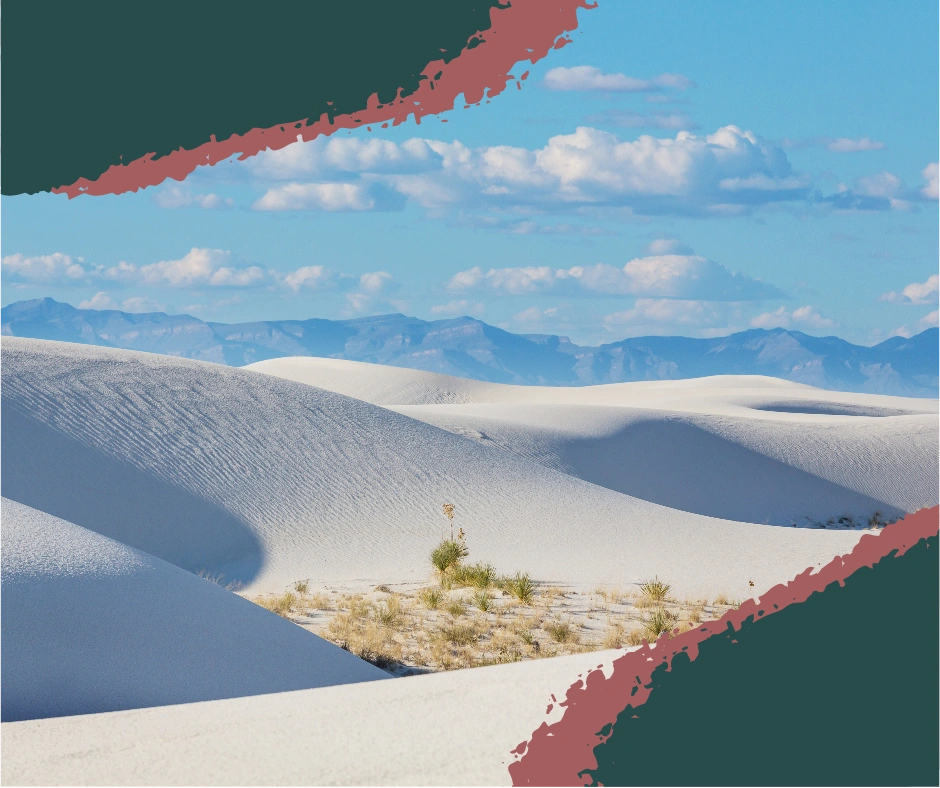
59. Wind Cave National Park (South Dakota) –
One of the oldest parks, featuring a unique boxwork cave formation and bison-filled prairies. Wind Cave National Park in South Dakota is known for its complex cave system, featuring boxwork formations found almost nowhere else on Earth. Wind Cave includes both underground caverns and aboveground prairies filled with bison, elk, and prairie dogs. Visitors can explore hiking trails through rolling hills and take guided tours into the cave’s mysterious depths. As part of the national park system, Wind Cave showcases unique geological wonders and diverse ecosystems that future generations will continue to enjoy.
60. Wrangell–St. Elias National Park (Alaska)
Wrangell–St. Elias National Park and Preserve in Alaska is the largest national park in the United States, encompassing over 13 million acres of remote wilderness. This vast park includes some of the tallest mountains in North America, active volcanoes, and sprawling glaciers. Part of a UNESCO World Heritage Site, Wrangell is a crown jewel of the national park system. The park is home to rugged backcountry trails, alpine lakes, and historic mining sites, offering opportunities for hiking, mountaineering, and solitude in a setting of unmatched natural beauty meant for future generations.
61. Yellowstone National Park (WY, MT, ID)
The original national park, home to geysers, hot springs, and abundant wildlife. Yellowstone National Park, located in Wyoming, Montana, and Idaho, is the first national park in the United States and home to geothermal wonders like Old Faithful and the Grand Prismatic Spring. Yellowstone offers hiking trails, scenic drives, and diverse wildlife, making it a top destination for outdoor enthusiasts and a UNESCO World Heritage Site.
62. Yosemite National Park (California)
Yosemite National Park is famed for its waterfalls, cliffs, and giant sequoia groves. Yosemite National Park in California is one of the most iconic national parks in the United States. It attracts millions of visitors each year. Yosemite offers miles of scenic trails, including the famous Half Dome hike, and is a true symbol of America’s natural beauty.’
63. Zion National Park (Utah) –
Towering sandstone canyons and iconic hikes like Angels Landing draw visitors year-round. Zion National Park in southern Utah is famous for Zion Canyon and the Virgin River that shaped it. This national park in the United States offers red rock cliffs, slot canyons, and thrilling hikes like Angels Landing. Zion is one of the most beloved parks in the national park system for rock climbing and scenic trails through diverse ecosystems.
Experience the Diversity of National Parks Service
Every national park in the United States tells a story — of geologic wonders, of ancient cultures, of enduring beauty. Whether you’re hiking high in the Rocky Mountain National Park, kayaking among glaciers in Kenai Fjords National Park, exploring waterfalls in Great Smoky Mountains National, or soaking in thermal springs in Hot Springs National Park, these protected places connect us with nature and history.
Thanks to the National Park Service, generations can continue to experience the unmatched diversity of the American landscape — from Yosemite National Park’s granite giants to the turquoise waves of the Virgin Islands.
